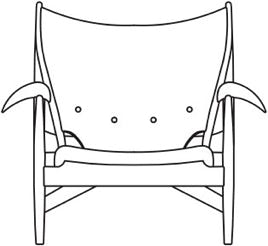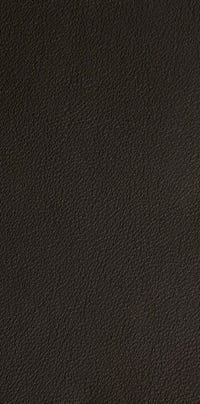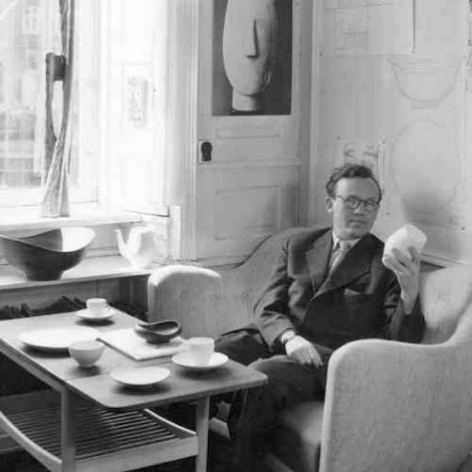15% off with DESIGN15

The iconic Chieftain Chair is one of Finn Juhl’s absolute masterpieces, representing the peak of his career as a furniture designer. At its introduction in 1949, the chair marked a renewal of the Danish furniture design tradition. Today, it is perceived as one of the most important exponents of the Danish Modern movement in the US during the 1950s. For this reason, Finn Juhl is often considered the father of Danish Modern.
Inspired by modern art, the Chieftain Chair with its organic shapes, liberated itself from traditional Danish furniture design and strict functionalism in both shape, construction and materials.
In 2012, the Chieftain Chair won the Danish Design Award, Classic. The jury said in its motivation: ”Today, the Chieftain Chair stands as an inspiration to a new generation of furniture designers and as proof that attention to quality, international calibre and a will to break away from tradition can pave the way to make a difference as a designer”.
Finn Juhl was however quite modest about the development process of the chair, and did not have any expectations of its greatness. He said: “I started drawing the Chieftain Chair one day in the spring of 1949. I was at home, and I started drawing a small sketch around 10 AM with just four vertical lines connected with something. By two or three o’clock in the morning I had painted it. But in reality, I don’t know how long it took me to design that chair. Perhaps I had a vague idea for some time that I wanted to design something bigger. There had been so many small, handy chairs, so I probably felt like designing something a bit more pompous...”
Chair H92.5 x W100 x D88 cm Sofa H92.5 x W148 x D88 cm Seat height 34.5 cm
Footstool H38 x 45 x 60 cm
Upholstery Leather
Wood Walnut or Oak



Chair
from
Sofa
from
Footstool
from
soaped oak
white oiled oak
oiled oak
clear lacquered oak
clear lacquered walnut
oiled walnut









leather Vegetal black (leather price group 4) / oiled walnut
leather Vegetal nature (leather price group 4) / oiled walnut
leather Vegetal nature (leather price group 4) / clear oiled oak
leather Vegetal nature (leather price group 4) / dark oiled oak
leather Vegetal nature (leather price group 4) / oiled walnut
leather Vegetal cognac / walnut (leather price group 4) / clear oiled oak
leather Vegetal cognac / walnut (leather price group 4) / dark oiled oak
leather Vegetal cognac / walnut (leather price group 4) / oiled walnut
leather Vegetal black (leather price group 4) / clear oiled oak
leather Vegetal black (leather price group 4) / dark oiled oak
leather Vegetal black (leather price group 4) / oiled walnut
Chieftain Chair
Chieftain Sofa
Chieftain Footstool
Finn Juhl

As a teenager, Finn Juhl (1912-1989) wanted to become an art historian, having a passion for the fine arts since childhood. His father stopped him and Finn Juhl started architectural studies. Later, when his fame as a designer of furniture acquired, he speaks of himself as an autodidact, in reference to this upset vocation that forced him to walk intellectually on a lonely way. His style owes much to this singular trajectory, with its non academic interpretation of art visible in his work. Finn Juhl started his studies in 1930, a key period which saw the birth of modern design and furniture.
His modern offices in central Copenhagen was greeting his visitors with a huge Japanese fish in paper, symbol of imagination. Rather than thinking in terms of practical construction, Finn Juhl had the mind-set of a sculptor, when he shaped a piece of furniture. In the 1940s and 1950s, this way of working had never been seen before. His ambition was to design furniture with movement and life.
Juhl took pride in making both the structurally supportive elements of the furniture and the seated person look as though they are floating. In some of his chairs, the backrest and the seat are almost invisibly joined, as if they were clouds floating through the room.
In creating his furniture, Finn Juhl worked with two elements: The carrying element, and the carried. He eventually became known for his special ability to separate the bearing parts from the borne. This is one of many examples of how he broke free from conventional working methods and found his inspiration in art.
Ce site web utilise les cookies techniques pour fonctionner.
Vous pouvez les refuser, mais perdrez alors la possibilité d'acheter.
OK
Refuser